Delphix self-service data container activities
Configuring data containers in Delphix self-service
A data container is comprised of a set of virtual databases (VDBs), where each VDB is a direct child of the dSource, VDB, or vFiles in the data template's data sources. Delphix Self-Service does not automatically provision VDBs when creating a data container; a Delphix admin must create the required VDBs using the Management application.
Once a VDB or vFile is part of a Self-Service container, you cannot use the Management Service to rewind, refresh, or delete it. You can still use the Management Service to disable or enable it, take a snapshot of it, or provision a new VDB or vFile from it.
Select the Overview page.
Select a template from which you want to create the data container. This will take you to the Data Template page.
Add a data container
Click Add Container in the upper right-hand corner of the screen.
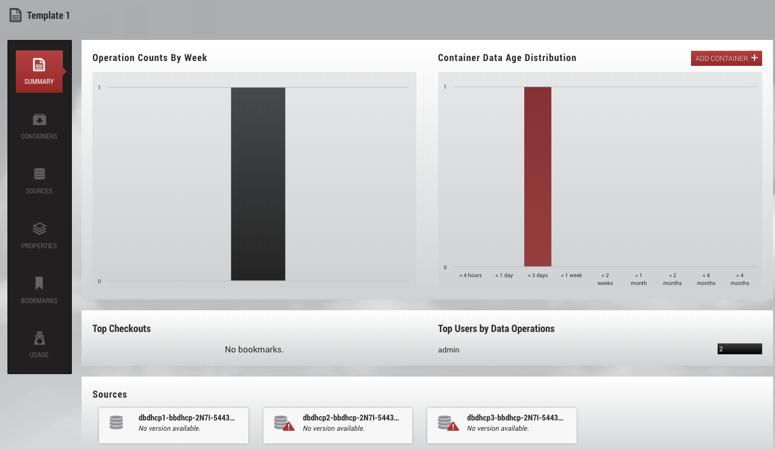
Details Panel and Dashboard
This will take you the Create Data Container page.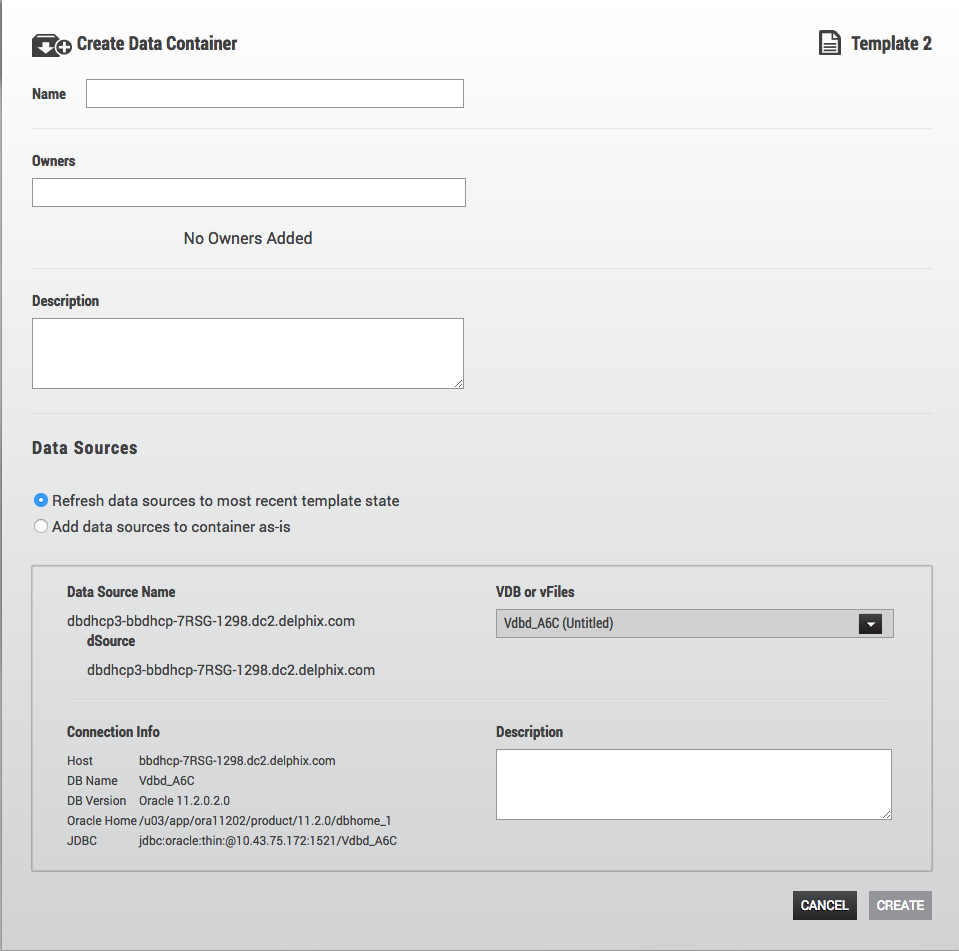
Data Container DialogOptional: Enter information about the data container, such as the Name and Description.
Once the data container has been createdSelect the Owners for the data container from the search box. It is acceptable to have multiple owners for each data container. Any Delphix administrator is able to manage all containers, so the owners should be end-users. For details, see Understanding Delphix Self-Service User Management.

When a data container is created, you now have the option to:
Refresh data sources to most recent template state – This option will refresh VDBs before adding them to the container. This is done to enforce that when multiple sources are used in a container, the sources are consistent.
Add data sources to container as-is – This option will not refresh the data sources.
Select the VDBs to use for this container's data sources. The available VDBs have the following constraints:
They have been provisioned from the dSources/VDBs belonging to the parent data template
They are not already part of another data template or container
If there are no VDBs that meet these constraints, you may see a message informing you that you do not have any compatible VDBs.
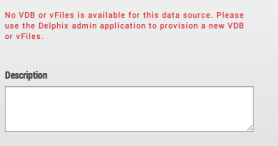
VDB Warning Alert
Click Create.
Selecting Masked Data Sources for Data Containers
Prerequisites
Procedure
Once you have selected a child masked VDB for the data container, you can see the parent-child relationship as a masked source under data sources.
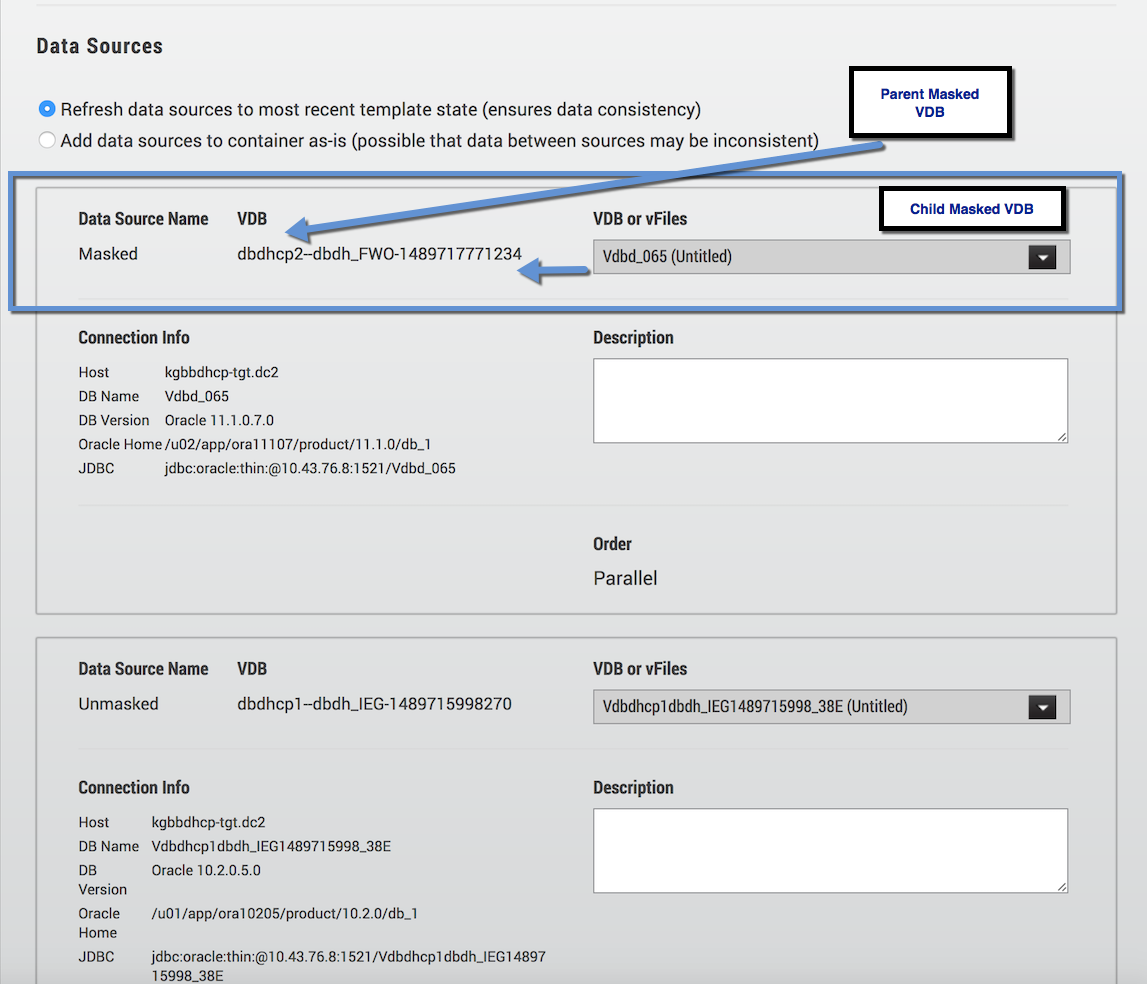
Masked Data Sources Parent/Child Relationship
As an admin user, you can select both masked and unmasked data sources in both Delphix Self-Service templates and data containers.
Delphix Self-Service users will not know whether the data in their containers and branches is masked or unmasked. All Delphix Self-Service functionality remains the same regardless of whether a data source is masked or unmasked.
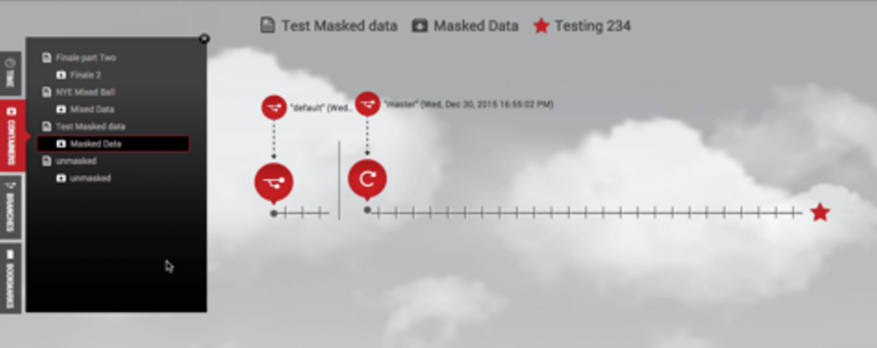
The figure above is an example of a data container with masked data.
Delete a Data Container
All data sources (VDBs and vFiles) in a Data Container are not deleted as part of the Data Container deletion process.
When performing the Delete Container operation, you can check the Delete associated VDBs and vFiles box in the dialog window to delete the data sources associated with the container.
Data management operations
Start a data container
Starting a Data Container does the following:
Starts the data sources, This means that each data source listed in the Source Details section of the Data Container page will start using CPU and network resources on the host system it is running.
Puts a copy of the data from the active branch into those data sources.
On the Self-Service Toolbar, click Start.
Stop a data container
Stopping a data container does the following:
If not already done, copies the current data in the data sources into the active branch of the data container
Shuts down the data sources. This means each data source listed in the Source Details section of the Data Container page will stop using CPU and network resources on the host system.
On the Self-Service Toolbar, click Stop.
Other operations on the data container, such as Stop, Reset, and Refresh, must be performed from the Data Management page:
Data Management Interface Shortcut in Delphix Self-Service Data Template
Locking a Container
On the Self-Service Toolbar, click Lock.

Locking a data container does the following:
You become the only user who can perform operations on it.
For all other users, the container appears disabled.
Unlocking a container
Unlocking a data container does the following allows other Self-Service users to perform operations on that container.
This operation is only enabled if a container is currently locked. Only the user who locked a container or a Delphix Self-Service administrator can unlock it.

In Delphix Engine version 8.0.0.0 (or later), if a Self-service data container contains an Oracle virtual PDB (vPDB) and the PDB’s virtual container database (vCDB) contains more than one vPDB, the start of the container will fail with error ‘failed to enable data container “<data container name>“’ if the vCDB is not enabled or it is not running. Start the vCDB first (using Delphix Management UI) and then start the data container again.
